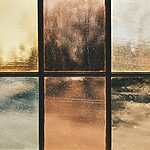How to Make Your Property Greener
With rising costs and sustainability at the forefront of our minds, it’s important to seek out renewable energy sources, eco-cleaning products and more sustainable ways of working. In this article, we take a look at how to make your property greener.
Tips to make your property greener
We’re all aware we need to recycle and cut down on energy consumption. But what else can we be doing in our domestic and commercial properties to reduce their carbon footprint? And who can help us to do it?
Choose trades with eco-friendly credentials
Modern businesses have a duty to protect the planet, but you’ll find some are doing more than others. Before you contract a business to carry out services on your behalf, check its environmental policies (this should be easily accessed via its website).
Use a pure water window cleaner
This technique has revolutionised the window cleaning industry, with water-fed poles cutting down on water waste and the need for detergent. Traditional cleaning methods run the risk of polluting waterways, as well as sploshing unnecessary quantities of water around. And if their transport isn’t eclectic or hybrid, you’ll be adding to emissions. This is why your choice of window cleaner is especially pertinent when it comes to sustainability.
How can you make a building more environmentally friendly?
Unless you’re in a modern “green build”, you might want to look at making changes to the fabric of the property.
Low-carbon heat pumps
Gas-guzzling radiators powered by old boilers will spike your energy bills each winter. If you’re looking to upgrade, consider a ground or air source system instead. You may be eligible for funding to help with installation costs.
Insulation
Draughty windows can be a real problem, particularly in period properties. Subtle secondary glazing can be effective, without spoiling the aesthetic. And don’t forget to clean the glass! Dirt will reduce your solar gain, limiting how much your rooms warm up during the day. Loft insulation — a simple, cheap job — makes a huge difference too, as does sealing holes in floorboards. Cavity wall insulation may also be relevant for you. However, do note that this isn’t suitable for all properties, particularly those built in, or before, the Edwardian era (like so many in Scotland). So do take specialist advice before proceeding if this is the case, as it can be counterproductive and even cause longer-term damage,
Solar panels
A big percentage of Scotland’s energy consumption is covered by renewables, and while you probably won’t be able to pop a wind turbine outside, you may well be able to install solar panels. If you do decide to take this route, we have advice on how to maximise solar panel output.
Many of these initiatives, such as heat pumps, insulation and solar panels, may be eligible for grants or financial assistance. You can take a look at the Home Energy Scotland website for more information on how to make your property greener.








